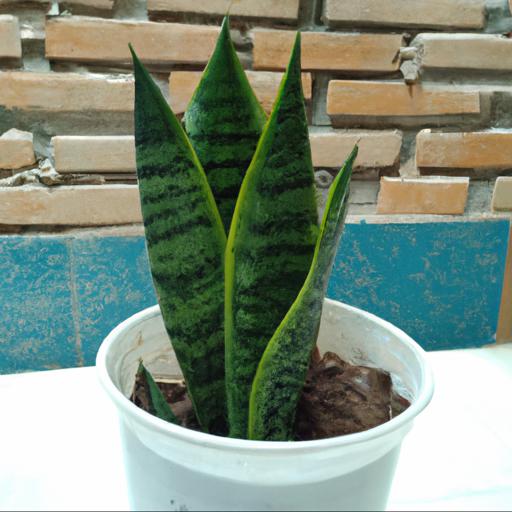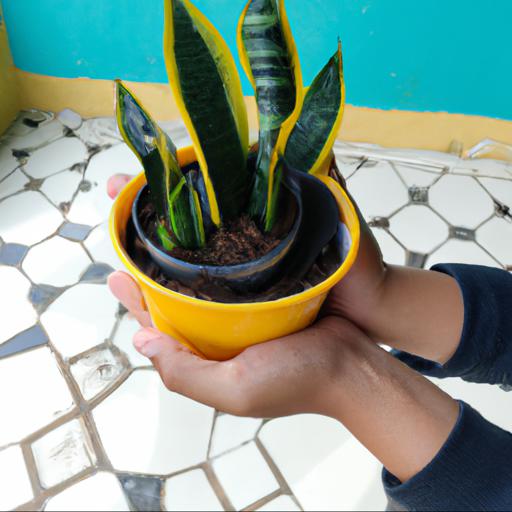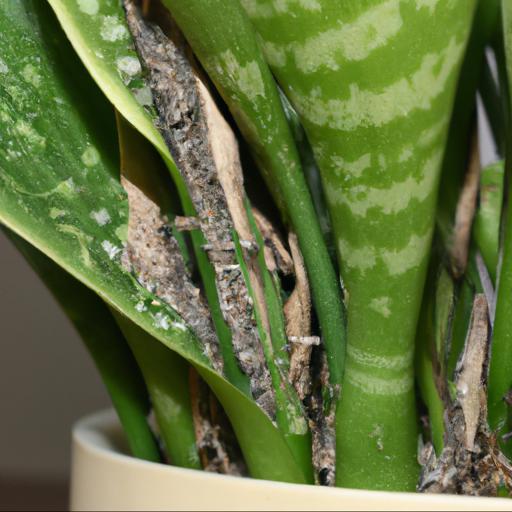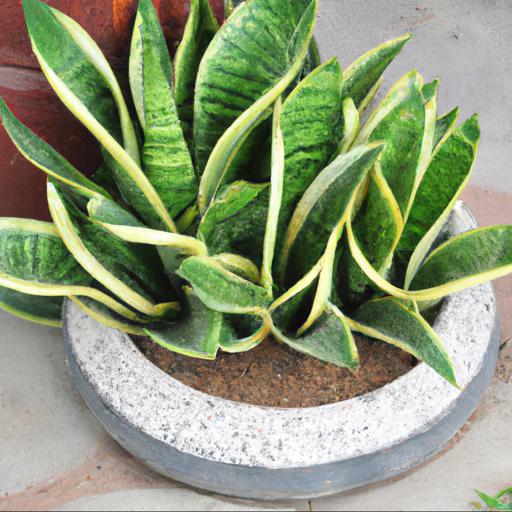Sansevieria trifasciata, commonly known as Snake Plant or Mother-in-law’s Tongue, is an evergreen perennial flowering plant belonging to the family Asparagaceae. It is native to tropical West Africa and is a popular houseplant due to its striking features and low maintenance requirements.
It is highly tolerant of drought and can survive in a wide range of growing conditions, making it an ideal choice for busy households. In this blog, we will explore the many benefits of keeping Sansevieria trifasciata as a houseplant and discuss how to care for this versatile species.
Benefits of growing sansevieria trifasciata

Sansevieria trifasciata, commonly known as the snake plant or mother-in-law’s tongue, is one of the most popular houseplants and an ideal choice for any UK garden. Growing this lovely specimen adds a great aesthetic addition to your garden’s botanical fortitude, as well as a host of beneficial features that any avid garden enthusiast will admire.
To start, this hardy, resilient plant is extremely low-maintenance, making it a popular choice among busy people and beginner gardeners. Requiring minimal care, this plant is probably the least demanding one in the houseplant family; it has even been said that the only way to kill it is to overwater it. Once potted, sansevieria trifasciata is an easy and reliable addition to your indoor or outdoor collection.
In addition to its ease of care, sansevieria trifasciata also provides a few other practical benefits. It is known to absorb air pollutants, helping to keep the air in your home or garden clean and pure – a definite plus for those who have allergies. Furthermore, this beautiful houseplant emits oxygen and absorbs carbon dioxide at night, making it an ideal choice for bedrooms and any other room you wish to keep oxygenated and fresh throughout the day or night.
All in all, sansevieria trifasciata makes for a great addition to any UK garden due to its minimal maintenance requirements, air-purifying capabilities, and ability to provide fresh oxygen at night. Requiring little maintenance, this stunning and versatile plant can fit in any setting and bring an exotic touch and plenty of helpful benefits to any UK garden.
Tips for growing sansevieria trifasciata

The Sansevieria trifasciata, often known as Snake Plant or Mother-in-Law’s Tongue, is one of the toughest plants in the world. This hardy African native can tolerate low to medium light and infrequent watering, and with a little TLC it will put on a beautiful and long-lasting show in your home or garden.
With its signature striped pattern of yellow and green, the Sansevieria trifasciata adds a designer’s touch to any interior or outdoor landscape. This species grows best in partially shaded areas with medium-draining soils and regular watering. To get the best results, it is recommended to water your plants about once a week during the growing season, and once a month during colder months.
Don’t be tempted to water too much, as overwatering can lead to fungal diseases. Additionally, the plant can be prone to getting scale, mealy bugs and spider mites, so always check for any signs of infestation. To keep the Sansevieria trifasciata healthy and problem-free, it is important to use balanced fertilizers with 8-12-10 or 8-20-20 NPK ratios.
Doing so once a month during the growing season will help your plant reach its maximum potential. Pruning is also advised to control the plant’s size and directing its growth.
Prune the Sansevieria trifasciata’s long stems to get a fuller, bushier look. Finally, never place these gorgeous plants in direct sunlight, as they are prone to getting sunburned.
With just a bit of care, your Sansevieria trifasciata will thrive for many years and add a unique touch to your home.
Common problems with sansevieria trifasciata

. Sansevieria trifasciata, commonly known as Snake Plant or Mother-In-Law’s Tongue, are a popular choice of succulents due to its low-maintenance requirements and attractive foliage.
Despite their durability, there are still some common issues that gardeners may face with Sansevieria trifasciata. The most common problem associated with Sansevieria trifasciata is over-watering. These succulents are very sensitive to water and can easily become root-bound if given too much.
When overly-watered, the plant’s leaves will start to yellow, droop, and become mushy. To prevent this from happening, gardeners should water only when the top of the soil feels dry and allow the soil to completely dry out between waterings. A second, less common concern is salt buildup from water.
Hard water often contains higher levels of salts and minerals, which can build up and cause root damage over time. This can be counteracted by flushing the soil with distilled or reverse osmosis water every few months to flush out the salts.
Finally, Sansevieria trifasciata can be sensitive to fertilizers and should be fertilized only in the spring and summer, and not in the winter. Too much fertilizer can lead to leaf burn and can cause the plant to become stunted in growth. If a fertilizer is used, diluted or slow-release fertilizer should be applied to avoid overloading the plant.
In conclusion, with proper care, Sansevieria trifasciata can be a low-maintenance, drought-tolerant option for your garden. To prevent issues from arising, water only when necessary and do not over-fertilize.
Be sure to flush the soil with distilled or reverse osmosis water every few months to prevent salt buildup and with proper care, you will have a stunning, hardy plant in your garden.
Our video recommendation
Conclusion
Sansevieria trifasciata, commonly known as Mother-in-Law’s Tongue, is an easy-to-care-for houseplant with a long history of use in traditional medicine. It is a low-maintenance plant that thrives in a wide range of lighting conditions and is able to survive in low humidity.
It is an excellent choice for both indoor and outdoor gardens, as it is tolerant of drought and can survive in a variety of soil types. The leaves of the Sansevieria trifasciata are known for their air-purifying qualities, making it a great choice for improving air quality in the home.
FAQ
What are the benefits of growing Sansevieria trifasciata?
The benefits of growing Sansevieria trifasciata include its ability to purify the air by removing toxins such as formaldehyde, xylene, and toluene, its low maintenance requirements, and its ability to thrive in low light conditions. Additionally, it is a drought-tolerant plant, making it an ideal choice for those with busy lifestyles.
How often should Sansevieria trifasciata be watered?
Sansevieria trifasciata should be watered every 2-3 weeks.
What type of soil is best for Sansevieria trifasciata?
Well-draining, sandy soil is best for Sansevieria trifasciata.
How much light does Sansevieria trifasciata need?
Sansevieria trifasciata needs bright, indirect light.
How can I propagate Sansevieria trifasciata?
Sansevieria trifasciata can be propagated by division, leaf cuttings, or stem cuttings. Division involves separating the plant into multiple sections and replanting them. Leaf cuttings involve cutting off a leaf and planting it in soil. Stem cuttings involve cutting off a stem and planting it in soil.
What pests or diseases can affect Sansevieria trifasciata?
Common pests and diseases that can affect Sansevieria trifasciata include mealybugs, scale, aphids, spider mites, and root rot.

